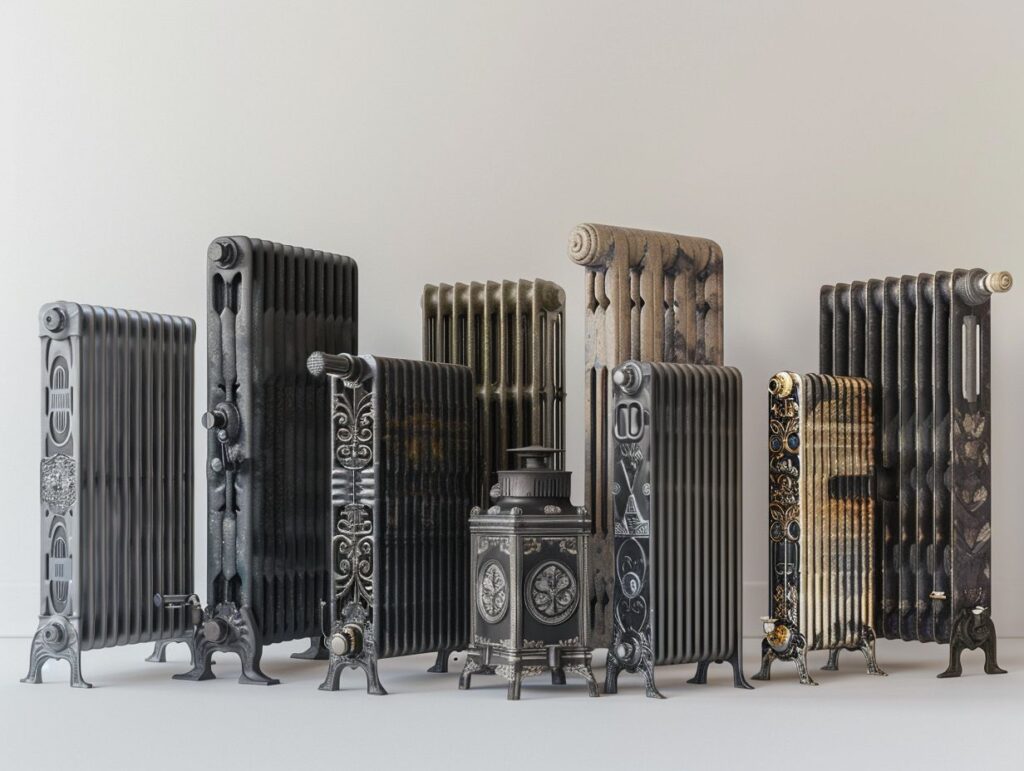When considering heating options for your home, traditional radiators stand out as a timeless choice that combines practicality and aesthetic appeal. In this exploration, we will delve into the various types of traditional radiators available and the advantages they bring.
It is essential to take into account critical factors when selecting the appropriate size radiator for your space, including room dimensions and heat output requirements. We will provide insights on the calculations necessary to determine the correct size and offer solutions for adjusting the size, if necessary.
Additionally, we will cover installation methods and maintenance best practices to ensure optimal performance of your traditional radiator. Join us in this journey through the realm of traditional radiators and learn how to select the ideal size to meet your heating needs effectively.
Key Takeaways:
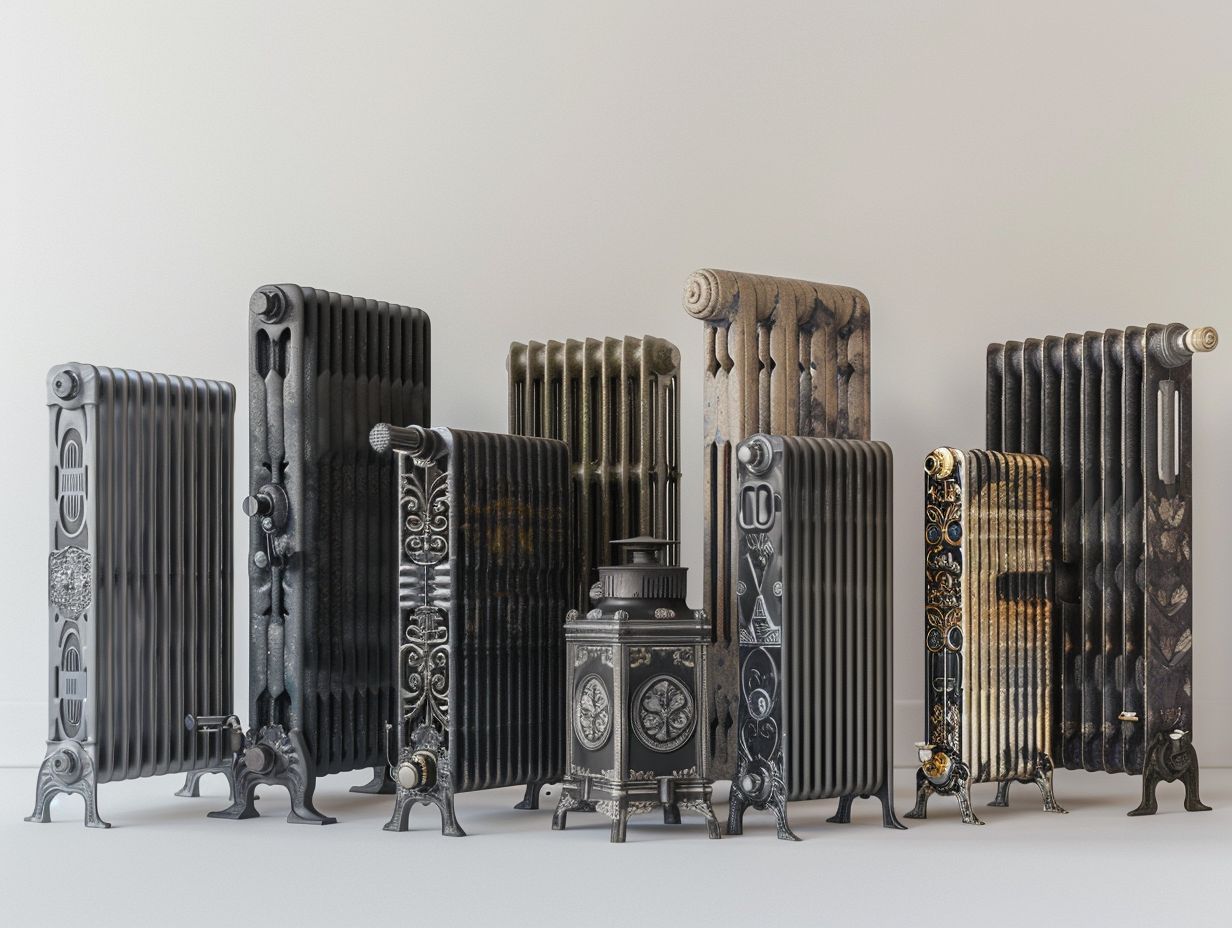
- Consider the room size and desired heat output when choosing the size of a traditional radiator, taking into account both the dimensions and insulation of the room.
- Other factors to consider include placement and aesthetics, as well as calculating the appropriate BTU using a calculation method and adjusting size with sections or a thermostatic valve.
- Proper installation techniques and regular maintenance are essential for optimal performance and longevity of traditional radiators.
Factors to Consider When Choosing a Size
When selecting the right size radiator for effective heating in a room, you must consider several factors. Room size, heat output (measured in BTUs), and available space are all crucial in determining the ideal radiator size.
It is essential to take into account the heat requirements of the room when choosing the radiator size. A radiator that is too small may struggle to heat the space adequately, leading to discomfort and inefficiency. Conversely, selecting a radiator that is too large can result in wasted energy and unnecessary costs.
By calculating the required heat output for the specific room dimensions and understanding the performance of various radiator sizes, you can ensure optimal heating efficiency and comfort.
Room Size and Heat Output
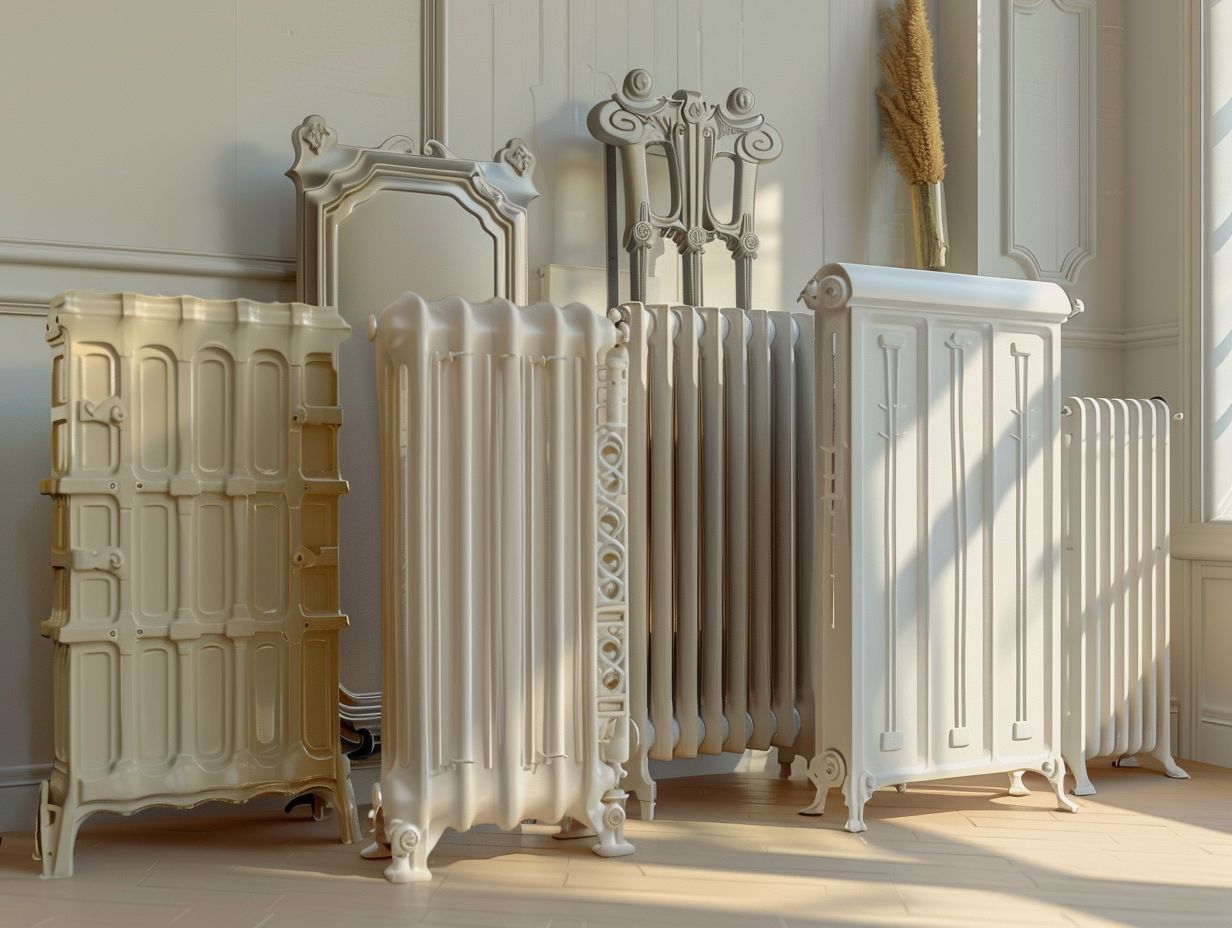
When considering radiator size, it is essential for you to match the BTU output to the room size to achieve optimal heating efficiency. Calculating the BTU requirements based on room dimensions is crucial for selecting the appropriate radiator size.
This process involves determining the square footage of the room, taking into account insulation levels, and considering the location of the space within the building.
The size of the room plays a critical role in the BTU calculations, as larger rooms require more heat output to maintain comfortable temperatures.
By understanding the connection between room size, BTU calculations, and heat output, homeowners can ensure that their radiators are appropriately sized to effectively heat the space without unnecessary energy waste.
Placement and Aesthetics
When considering the placement of radiators in a room, it is important to understand that this decision impacts both heating efficiency and the overall aesthetics of the space. Selecting the appropriate wall for radiator installation is crucial in ensuring effective heat distribution while maintaining the room’s design integrity.
When determining where to place radiators, take into account the spatial layout of the room. It is imperative to avoid positioning radiators near obstructions that could impede the flow of heat, such as large furniture pieces or curtains.
Furthermore, integrating the radiator design with the room’s decor can enhance its visual appeal. Opting for radiator covers or painting them to match the wall colour can create a seamless and cohesive appearance.
By strategically situating radiators in areas that allow for optimal heat circulation and harmonising their design with other elements in the room, you can achieve a harmonious balance between functionality and aesthetic elegance.
Calculating the Right Size for Your Needs
Accurately calculating the correct radiator size based on BTU requirements is critical to achieving optimal heating performance. Utilising a BTU calculator can assist you in determining the suitable radiator size for specific room dimensions.
By entering details such as room dimensions, insulation quality, and desired temperature into the BTU calculator, you can acquire a precise evaluation of the necessary heat output. The BTU calculation method factors in elements like room orientation, window size, and ceiling height to deliver a detailed recommendation for radiator size.
It is essential to take into account both the BTU rating of the radiator and the heat loss of the room to avoid over or undersizing. This methodical approach ensures that the heating system operates efficiently and effectively in maintaining a comfortable indoor climate.
BTU Calculation Method
The BTU calculation method involves measuring your room dimensions, assessing the heat requirements, and selecting a radiator with the appropriate heat output to efficiently warm your space.
To begin the process, accurately measure the length, width, and height of your room in feet. Once you have obtained these dimensions, multiply them to calculate the cubic footage of the space.
Next, take into account factors such as insulation quality, the number of windows, and ceiling height to determine the room’s heat loss rate. This will provide you with a more accurate estimation of the BTU requirements for effective heating.
When choosing a radiator, consider its BTU output capacity, ensuring it aligns with the calculated heat requirements of the room for optimal heating performance.
Other Considerations
When determining the appropriate size for your heating requirements, it is important to consider factors beyond BTU calculations. This includes evaluating available space for radiator placement and assessing the necessary wall support for installation. You must ensure that the selected radiator size aligns with the spatial limitations of the room where it will be placed.
Larger radiators may require more wall space to ensure secure mounting, particularly for models with added features such as towel rails or shelves. It is essential to evaluate the structural integrity of the walls, as heavier radiators may require additional support structures.
A thorough understanding of the spatial layout and wall composition is crucial in selecting a radiator that not only fulfils your heating needs but also blends harmoniously with your space.
Options for Adjusting Size
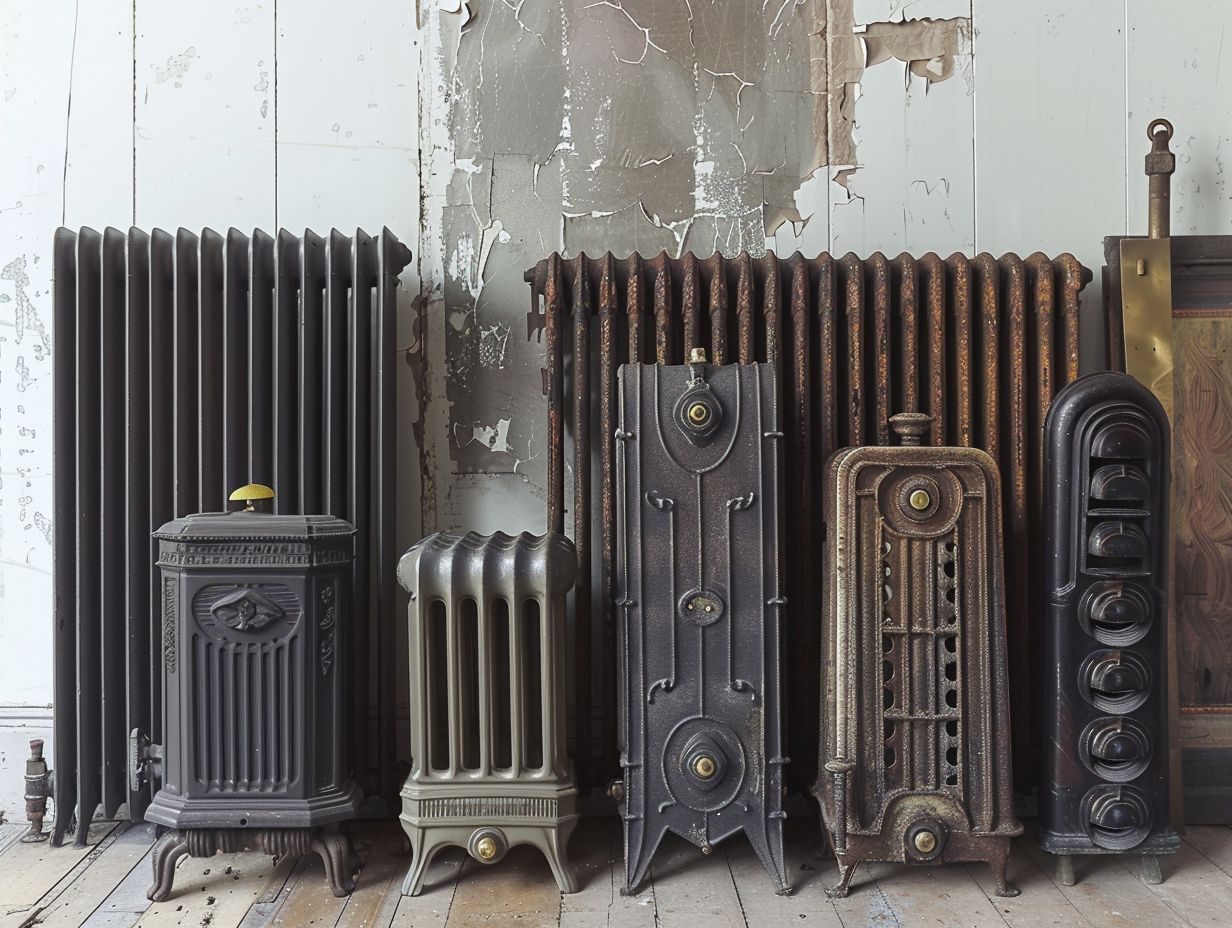
You have several options to adjust the size of your radiator to better meet your heating needs. These options include adding or removing sections from the radiator and installing a thermostatic radiator valve for improved control.
By adjusting the sections of your radiator, you can customise its size to suit specific rooms or heating requirements. This customisation allows for a more tailored approach in effectively distributing heat throughout your space.
Installing a thermostatic valve gives you precise control over the temperature, leading to optimised energy usage and comfort levels. Familiarising yourself with these techniques for customising radiator size can greatly enhance the efficiency and functionality of your heating system.
Adding or Removing Sections
Regarding adjusting the size of a radiator by adding or removing sections, you must understand that this action can directly impact the heat output and efficiency of the radiator. It is crucial for you to comprehend the relationship between the size of the radiator, available space, and BTU requirements for successful customisation.
Increasing the number of sections in a radiator can enhance its heat output capabilities, allowing you to effectively meet the heating needs of a specific area. Conversely, removing sections can decrease the overall heat output, making it suitable for smaller spaces or areas with lower heating requirements.
This customisation process enables you to optimise energy efficiency by aligning the size of the radiator with the thermal needs of the space, thereby reducing unnecessary energy consumption. It is essential to recognise that the strategic adjustment of radiator sections plays a significant role in maintaining a comfortable and cost-effective heating environment.
Using a Thermostatic Radiator Valve
Using a thermostatic radiator valve provides you with precise control over the temperature of your radiators and energy usage. This contributes to improved heating efficiency and energy conservation. These valves allow for customised adjustments to heat output based on the specific heating requirements of each room.
By allowing individual radiators to be set at different temperatures, thermostatic radiator valves offer room-by-room control, ultimately reducing the overall energy consumption of your heating system. This targeted approach helps prevent unnecessary overheating in unused spaces, thereby maximising energy efficiency.
Implementing these valves can result in cost savings by ensuring that energy is not wasted on heating rooms that do not require it. The inclusion of thermostatic radiator valves into your heating system can significantly enhance both comfort levels and cost-effectiveness.
Installation and Maintenance
Proper installation and regular maintenance are crucial for ensuring the optimal performance of your radiator system. By following best practices during installation, such as ensuring proper sizing, location, and insulation of your radiators, you can enhance the overall efficiency of your heating system.
Conducting routine maintenance tasks like bleeding the radiators, checking for leaks, and cleaning them will help prevent costly repairs and keep your system running smoothly.
Remember, a well-maintained radiator system not only provides comfort but also contributes to energy savings and a healthier indoor environment.
Proper Installation Techniques
When setting up radiators, ensure optimal heat distribution and system functionality by adhering to proper installation techniques. Key steps in the installation process include correctly positioning radiators on walls and connecting them to the central heating system.
When mounting radiators on walls, it is crucial to ensure that the brackets are securely attached to studs or using appropriate wall anchors for stability. Ahead of installation, it is important to bleed the radiators to remove any trapped air, ensuring efficient heat transfer.
When integrating the radiators into the central heating system, you must carefully follow the manufacturer’s instructions to connect the pipes and valves correctly. Check for any leaks in the connections and apply sealant if necessary. After installation, it is crucial to test the system thoroughly to verify proper functioning and address any issues promptly.
Maintenance Tips for Optimal Performance
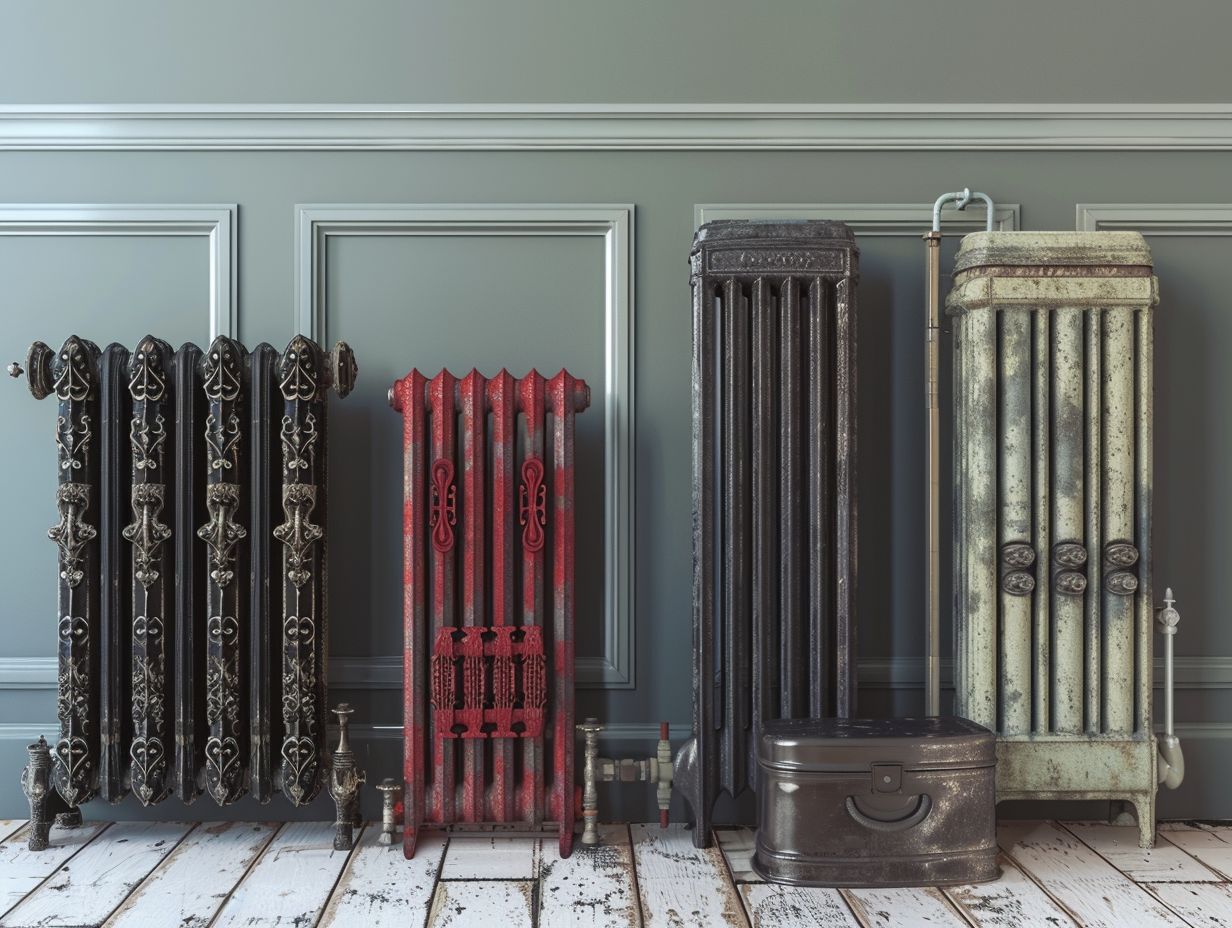
Regular maintenance is essential for ensuring the long-term efficiency and performance of your radiators. Implementing maintenance tips such as bleeding the radiators, checking for leaks, and monitoring energy usage can help you maintain a comfortable and energy-efficient home.
Bleeding your radiators involves releasing any trapped air to ensure optimal heat distribution. It is recommended to bleed your radiators at least once a year or whenever you notice cold spots. Regularly inspecting your radiators for leaks can prevent water damage and maintain their functionality.
Utilising an energy monitoring system can also provide valuable insights into how efficiently your radiators are operating, allowing you to make adjustments for improved energy savings. By staying proactive with these maintenance tasks, you can enhance the performance and longevity of your home heating system.
Frequently Asked Questions
What factors should I consider when choosing the right size traditional radiator?
When choosing the right size traditional radiator, you should consider the size of the room, heat output, and the existing heating system in your home.
How do I determine the size of the room for the traditional radiator?
The size of the room can be determined by measuring the length, width, and height of the room and multiplying them together to get the cubic footage. This will help determine the BTU (British Thermal Unit) needed for the room.
What is BTU and how does it relate to traditional radiators?
BTU stands for British Thermal Unit and is a measure of how much heat is required to raise the temperature of one pound of water by one degree Fahrenheit. Traditional radiators use BTU to determine the heat output needed for a specific room.
Can I use a traditional radiator that is smaller than the recommended size?
It is not recommended to use a traditional radiator that is smaller than the recommended size for a room. This can result in insufficient heat output and may lead to higher energy bills.
How do I know if the traditional radiator is compatible with my existing heating system?
You should consult with a professional plumber or heating engineer to ensure that the traditional radiator is compatible with your existing heating system. They can also help determine the correct size for your radiator.
What are some common mistakes to avoid when choosing the right size traditional radiator?
Some common mistakes to avoid when choosing the right size traditional radiator include not considering the size of the room, not factoring in heat output, and not consulting with a professional for compatibility and sizing recommendations.

